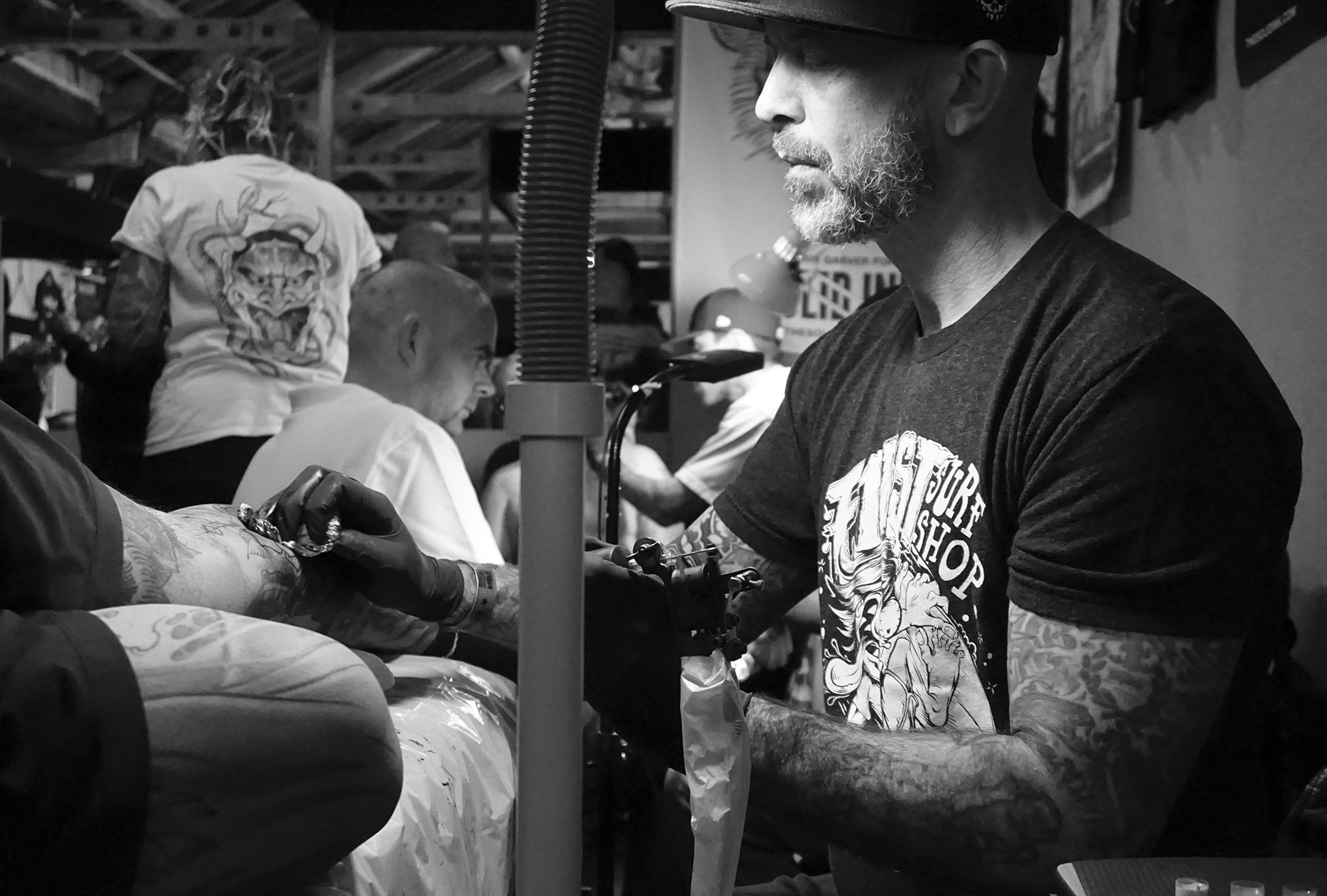
In a summarized historical explanation, the “Tattoo Renaissance” began in the late 1950s with tattooers like Lyle Tuttle, Don Nolan, Zeke Owens, Ed Hardy, and others pioneering the way.
“Between the hippie movement of the late ‘60s and the feminist campaigns and rights movements, the tattoo industry saw itself in the midst of a rebirth of sorts”; increasing customer base, visibility through tattooed celebrities, and pop culture. During the 2000s, tattooing had yet another peak with the appearance of television shows such as “Inked” (2005) and “Miami Ink” (2008, starring Chris Garver and Ami James), which gave us a look into the world of tattooists—improving social stigma.
With more legendary artists contributing to 21st-century history, Chris Garver is among them and one we are highlighting here today. He became a professional tattooer in the late 1980s and has worked in New York City since the 1990s. Below, you can read our interview with Garver taking us back to that period when the Health Department banned tattooing.
Above: Legendary tattooist Chris Garver at the 15th International London Tattoo Convention.
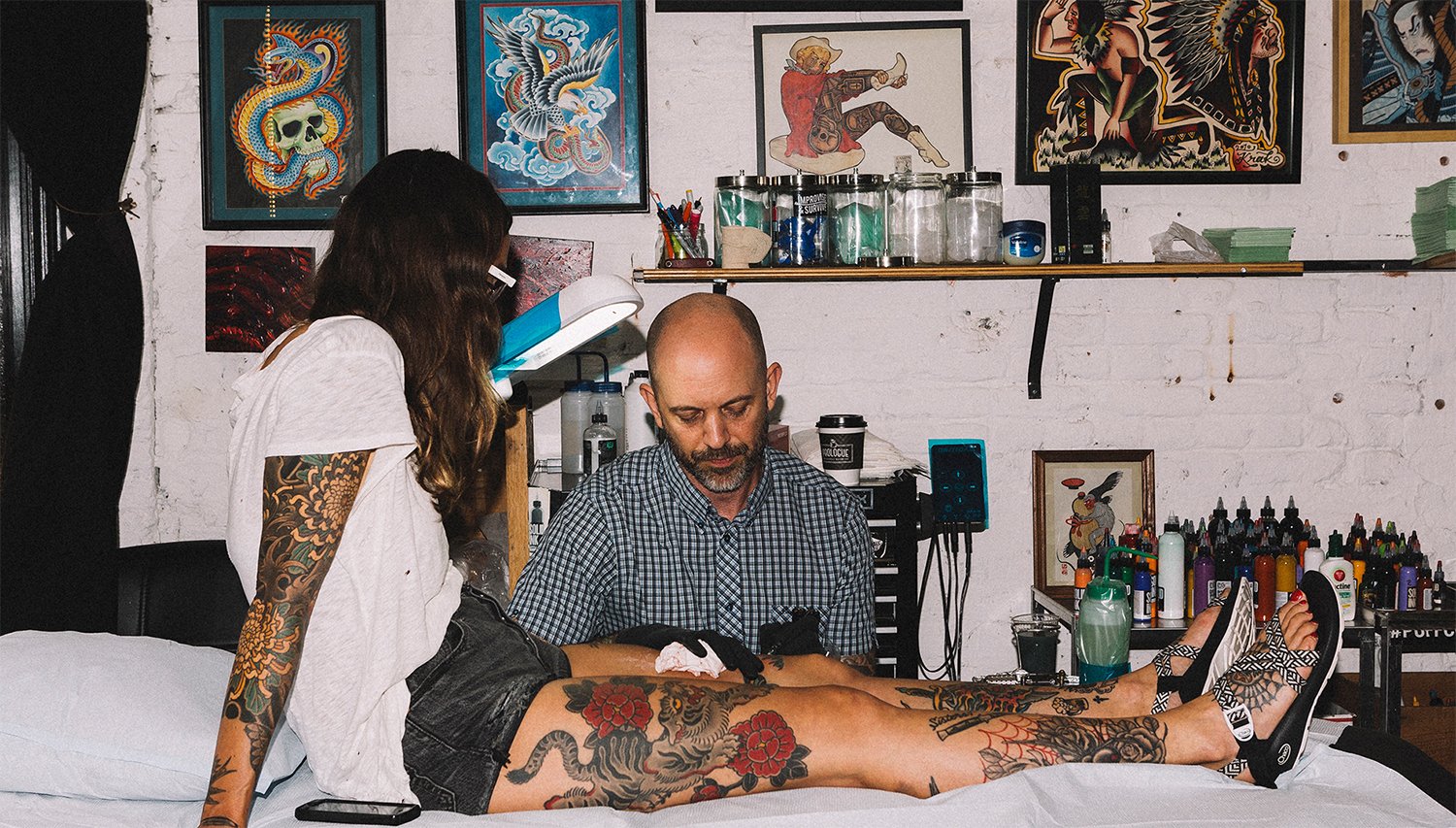
Garver at NY Adorned (a film still from the Viceland documentary). Photo © Garver.
When you started working at New York Adorned, the shop already had an appreciation for “tattooing as art,” which wasn’t common in the 90s. Did working there help you become a better artist?
Yes, working at Adorned exposed me to more tattooers pushing it artistically, and more people like that were my age. Before that, I was working with older guys and at biker shops. So, when I got to Adorned, I think my growth was pretty significant there.
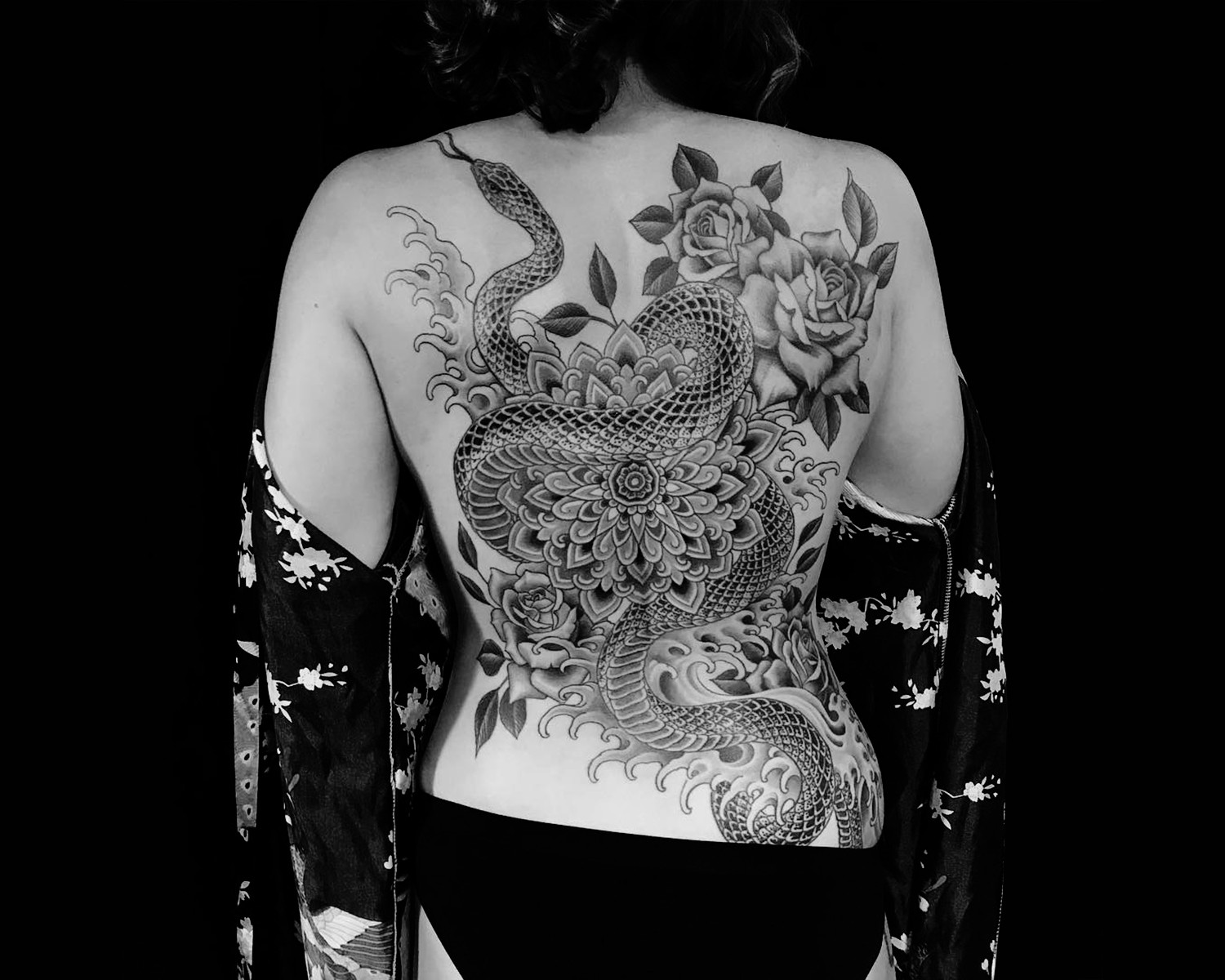
Garver inked this epic back piece for Clarissa, her first tattoo ever!
You were working with tattooists that were more advanced than you?
I worked with people that I felt were way more advanced than I was, so I had to play some catch-up. But it was great! Mike Ledger and Scott Harrison were artists that were always there and excellent to work with. And we’d constantly have fantastic guest artists too.
Adorned owner Lori Leven focused on the business side, which facilitated you and colleagues’ concentration on the creative side.
Yeah, she was good at that. I think that’s one of the most incredible things she did, making tattooing comfortable for the artist. She catered to the artist, and she knew how to do business too. Usually, the guys I worked with were [scrambled] like on a pirate ship, and then all of a sudden, it was civilized, almost.
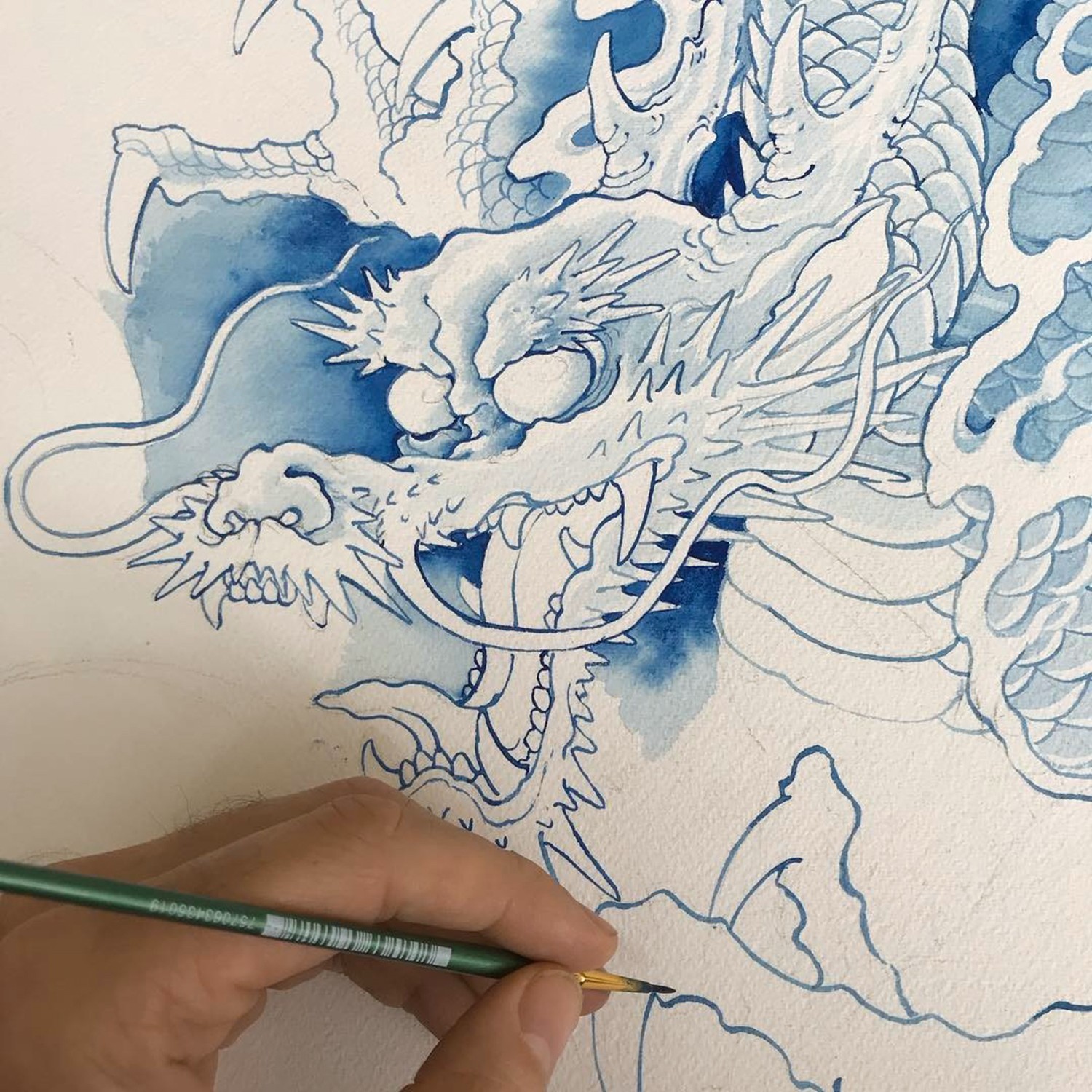
A work-in-progress by Chris Garver.
Much has changed since then.
Before she did Adorned, I don’t think that any shops had helpers, like assistants, who cleaned after you and bused your table. Before, it was like you did everything yourself. Now, the tattooers are all spoiled. We all have people do things for us.
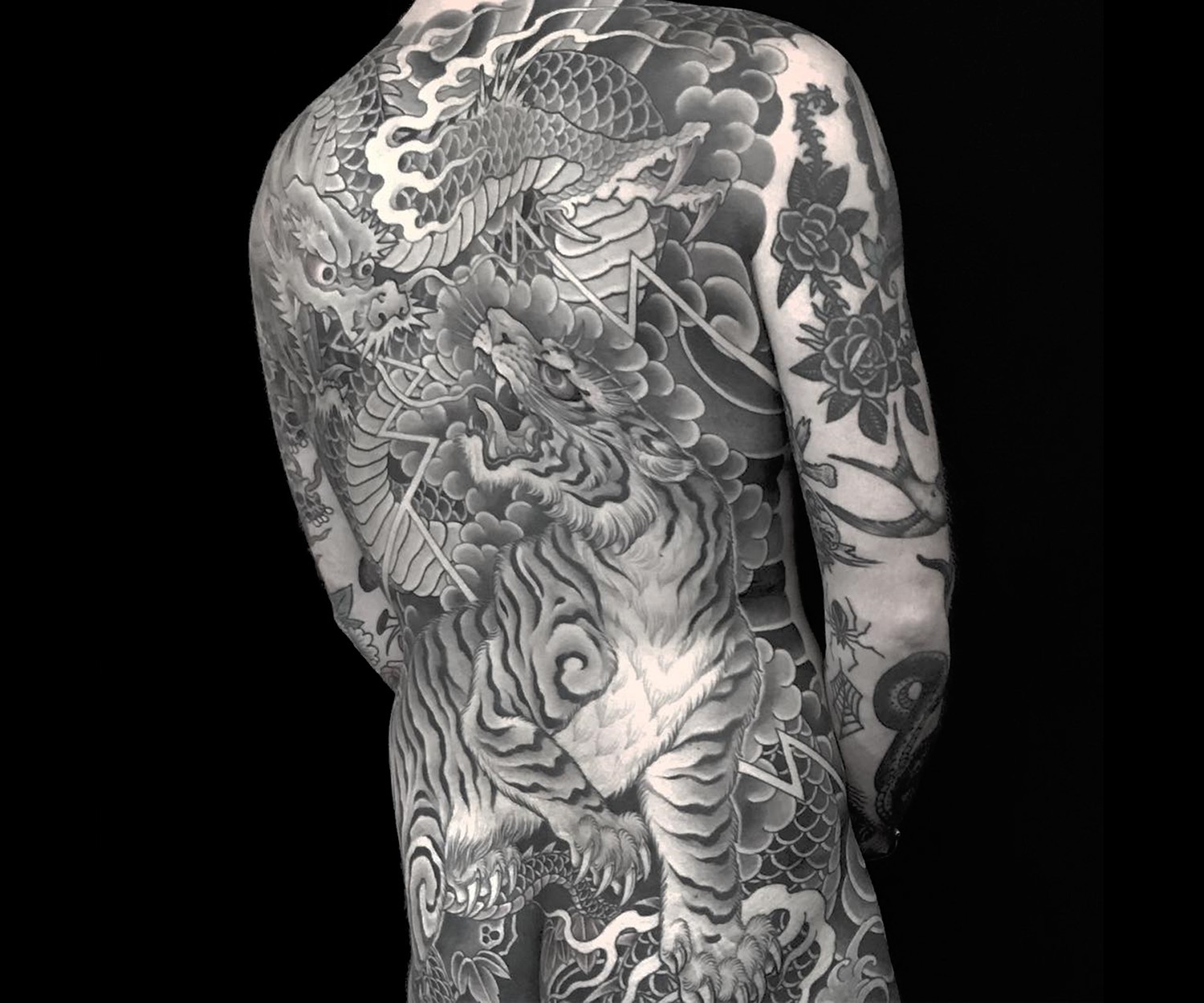
A gorgeous black-and-gray art piece for client Nick.
Still referring to the 90s and your first-person experience, then. Why did New York take longer to evolve its tattooing scene in regards to San Francisco?
One of the things that kept New York back a little bit was that it was illegal. Many people were probably scared to tattoo in an environment where you’re doing something criminal. So guys who were artsier probably didn’t want to get arrested for tattooing or tattooing unsavory people.

Tattooing a client at Tobacco Dock in London, UK.
It was almost like doing graffiti in the 90s.
Probably! Yeah, I think doing something illegal stops many people from doing it. [Laughter] I almost preferred it; it was more dangerous.
There’s more adrenaline involved.
It kept timid people away.
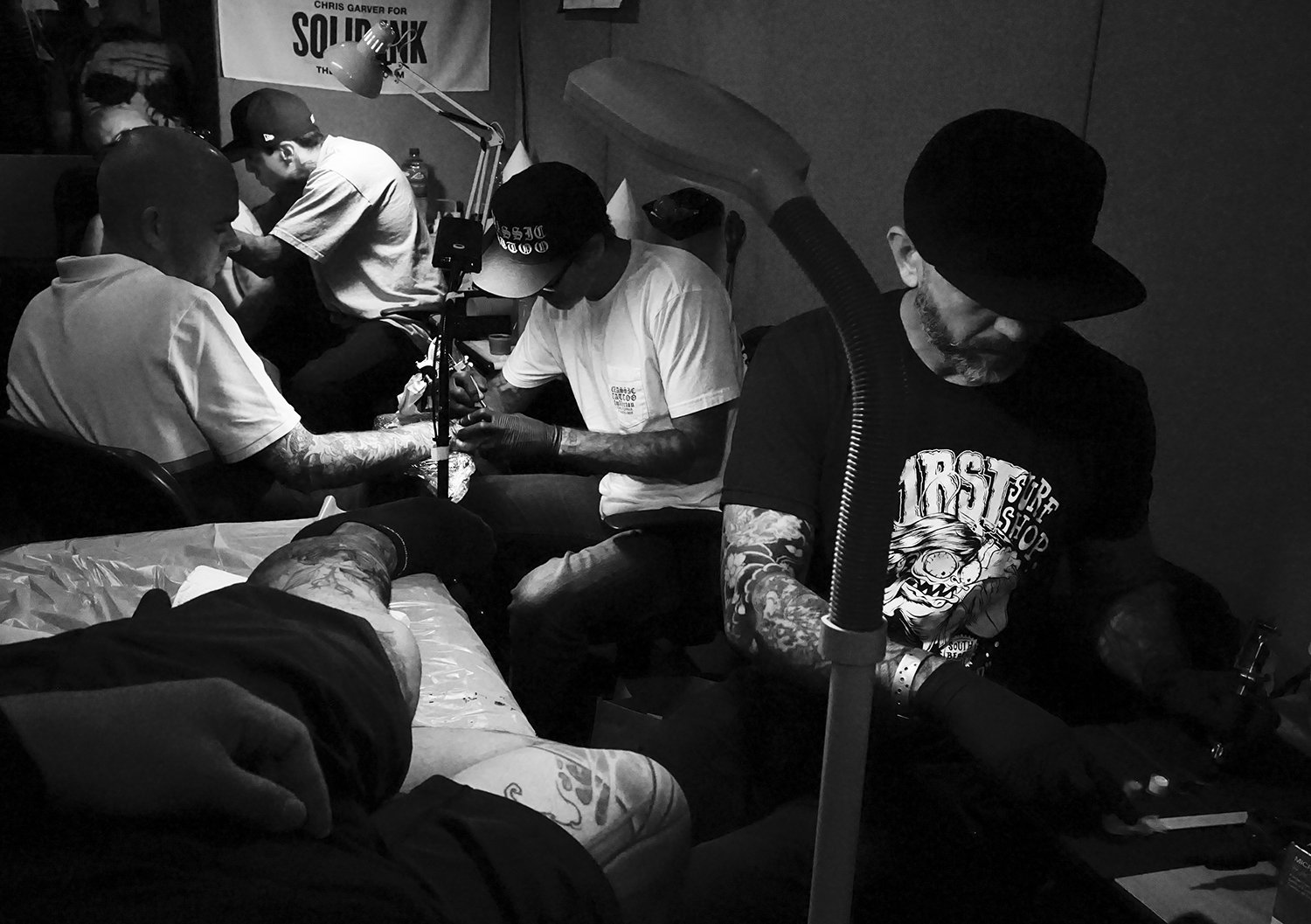
From left to right: Javier DeLuna, Tim Hendricks and Chris Garver representing Solid Ink.
Did you ever get arrested because you were tattooing?
No, I never got arrested. But once, my boss Jonathan Shaw said, “You know what? Let’s do it openly. Put a tattoo sign in the window.” And we were like, “All right, let’s see what happens.” And then I remember one day a cop came in with his uniform on. And I commented, “Oh, here we go.” I was like, “Hey, how are you doing?” The cop replied, “Yeah, I was wondering how much a Jesus’ head is?”
You were lucky!
Yes, he didn’t care. It would have been the health department that we probably had to watch out for.
In what year did they start changing the laws so that you could open legally?
I think it was 95 or 96; then, tattoo shops just started popping up everywhere. (It was kind of awful!)
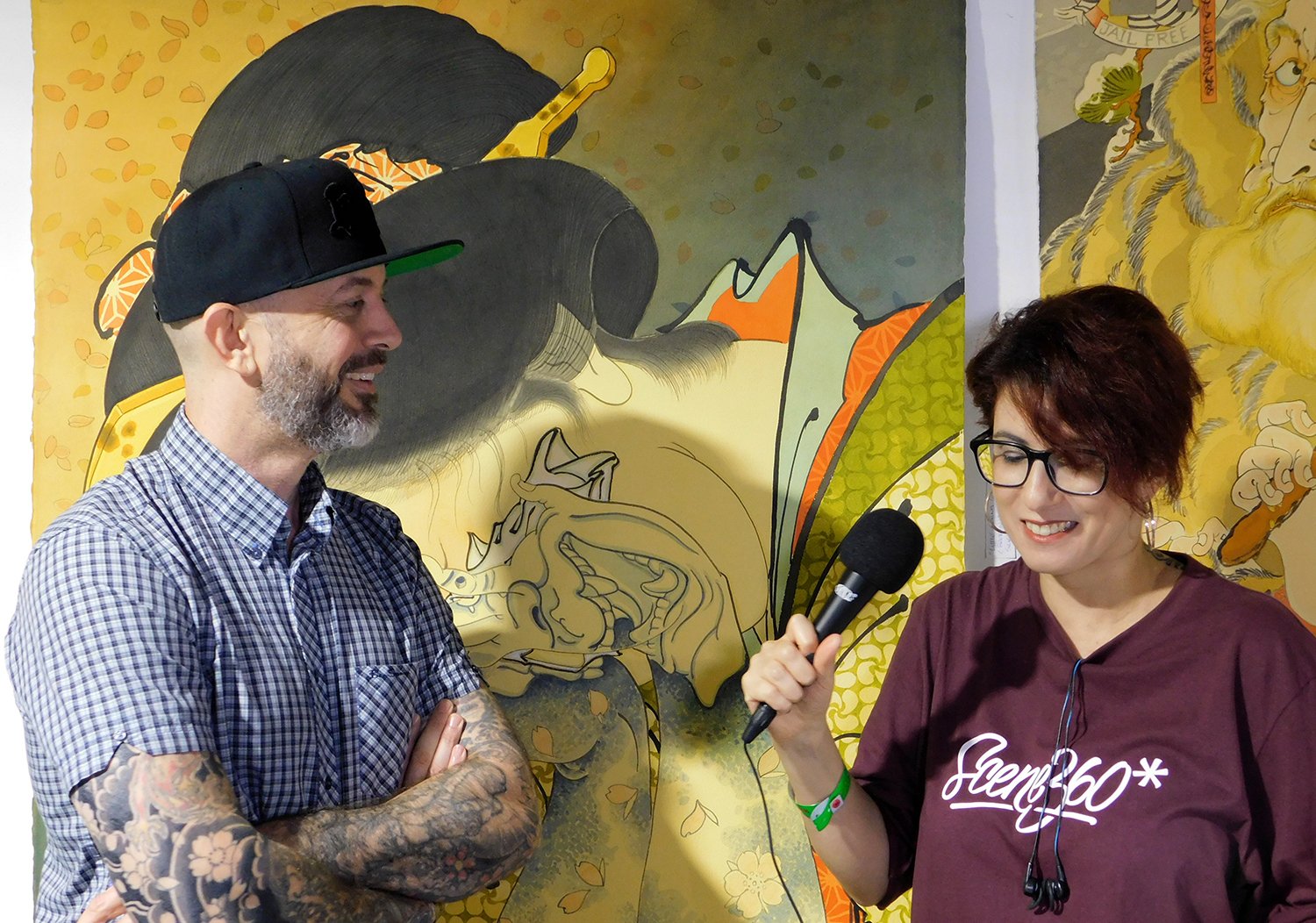
Chris Garver being interviewed by The Tattoo Journalist in London, UK. Art in background by Mike Dorsey.
Did you learn anything from tattoo artists working in San Francisco?
I did! I like Ed Hardy, Eddy Deutsche, Dan Higgs, and Freddy Corbin. But I think many people do, and the “chrome toaster” thing and everything was sacred (with a crown of thorns around it). I never got into it that much. I did a few “chrome-y” [effect] looking things, but I didn’t get into the weirdo stuff.
You mentioned in the 2018 Viceland documentary that, “tattooing deserves respect as an art form and I think it has achieved that.”
It has a universal acceptance and the quality of the art has definitely elevated quite a lot. I think it’s still underground art in a way. There’s a lot of tattoo exhibits and museums. There’s tattoo artists that have exhibited in all sorts of high-art places.
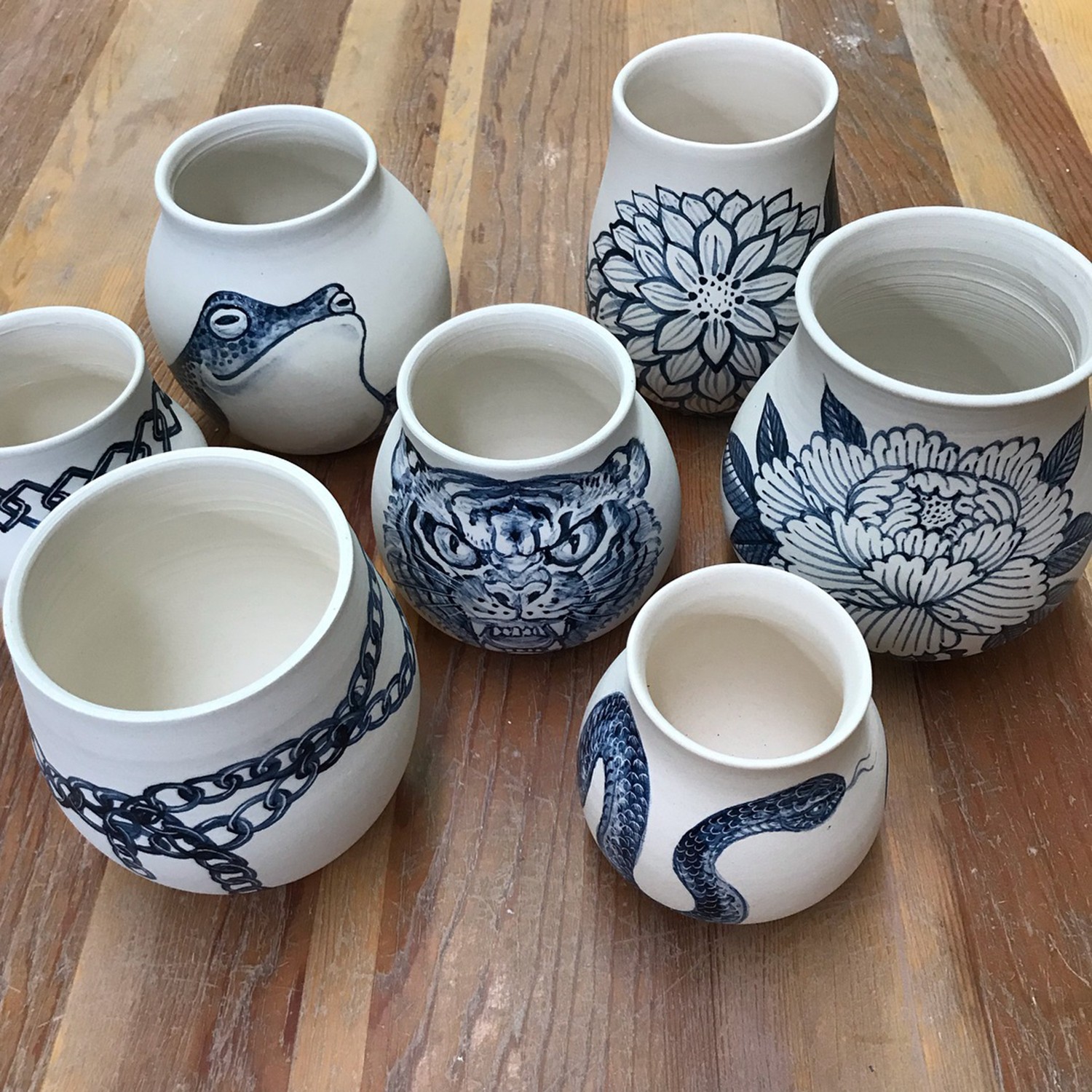
Inspired by Dutch pottery, Chris Garver has painted these items and selling at Five Points NYC.
Like Ed Hardy’s art show at the de Young museum.
Yeah. Ed Hardy, Dr Lakra… We had a show here at the Somerset House—a pretty prestigious place. So, [basically] tattooing went from the gutter to the top.
Pottery Art, Paintings, and Tattoos © Chris Garver. Convention and Interview Photos © Scene360.
